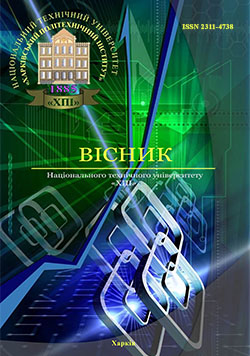CLASSIFICATION AND COMPLEX STATE VALUE OF SHOPPING CENTERS: PROJECT-ORIENTED APPROACH
DOI:
https://doi.org/10.20998/2413-3000.2016.1174.7Keywords:
trade and entertainment centers, class, classification, projects, value, safety, project-oriented approach, ITAbstract
Was done the analysis of projects objects of trade and entertainment centers from the perspective of improving the life safety and is proposed the definition of "Trade and entertainment center", "Trade and entertainment center" and "Complex value of trade and entertainment center." A classification of shopping centers on the classification criteria and the criteria are characterized by increased security status and attractiveness of their operation. The classification of trade and entertainment centers on the criteria of classification features were made. It characterizes the security situation and will increase the attractiveness of their operation. In the nearest future the most secure and modern TEC will be those buildings who will have unique qualities such as safety systems, excellent customer service, and thus by a high level of trust (the client) to the mall. The important role will play those TEC, who have clearly formed value oriented project management, including communication values using innovative methods and models. Trade and entertainment centers as an organization are included in the complex process of interaction management. They being both as an enterprise that serves the public and satisfying a great range of his interests and architectural site, which is leased and increases the business attractiveness of the district of TEC location. This duality of the essence of TEC center makes difficult to assess the effectiveness of its security.References
Muller I. (1984). Heuristic methods in engineering. Moscow: Radio and communication, 326 [in Russian].
Bushuyev S.D. (2010). Creative Technology Project Management: Monograph. Kiev: «Sammit-book», 768 [in Russian].
Rach V.A. (2010). Project Management: practical aspects of regional development strategies, teach. Guidances. «K. KIS», 19-21 [in Ukrainian].
Dryuliani B., & Dzhuler D. (2004). Creative strategy in advertising. Peter, 384 [in Russian].
Zachko O. B. (2010). Justification regional portfolios of projects improving life safety. Extended abstract of candidate’s thesis. Lviv [in Ukrainian].
Gladkaja E.N. (2011) The formalization of the method of making strategic decisions in upland real estate development projects. Project management and production development, 1 [in Ukrainian].
Ivanusa A.I, & Rak Yu.P. (2012) Models project management of human flows safe evacuation of sports and entertainment facilities. Visnyk of Lviv State University life safety, 6, 62-66 [in Russian].
Silberstein O.B., & Shahnes T.Y. (2014) Fundamentals of management of social projects of business. Modernization, Innovation, Razvitie. 152-157 [in Russian].
Vilkova A.S. (2015) Space-planning evolution of the multi-functional commercial complexes. Young scientists 7. 1104-1109 [in Russian].
Tokmachova O.S (2013) Methodological features of performance management of shopping centers. Actual problems of Economics and Law. 2 (26). 108-112 [in Russian].
Benai H.A., & Fetisov O.I. (2010). Analysis of functional planning features shopping centers. News DonNABA. Serіya: problems arhіtekturi i-mіstobuduvannya. Makіїvka-2010. 2 [in Russian].
Novak D. V. (2009) What is the value of possession and being here kondiktsiya? Herald of Civil Law 9.3, 289-316 [in Russian].
Ohara & Shigenobu. P2M: a guidebook of project & program management. (2005). Project Management Association of Japan.
Esaulova A.V. (2013) The experience of project management within the framework of the international program of global partnership. Bulletin of the Russian Economic University. GV Plekhanov, 7, 66-72 [in Russian].
Downloads
Published
Issue
Section
License
Copyright (c) 2016 Юрій Павлович РАК, Роман Русланович ГОЛОВАТИЙ

This work is licensed under a Creative Commons Attribution-NonCommercial-ShareAlike 4.0 International License.
Our journal abides by the Creative Commons copyright rights and permissions for open access journals.
Authors who publish with this journal agree to the following terms:
Authors hold the copyright without restrictions and grant the journal right of first publication with the work simultaneously licensed under a Creative Commons Attribution-NonCommercial-ShareAlike 4.0 International License (CC BY-NC-SA 4.0) that allows others to share the work with an acknowledgement of the work's authorship and initial publication in this journal.
Authors are able to enter into separate, additional contractual arrangements for the non-commercial and non-exclusive distribution of the journal's published version of the work (e.g., post it to an institutional repository or publish it in a book), with an acknowledgement of its initial publication in this journal.
Authors are permitted and encouraged to post their published work online (e.g., in institutional repositories or on their website) as it can lead to productive exchanges, as well as earlier and greater citation of published work.

